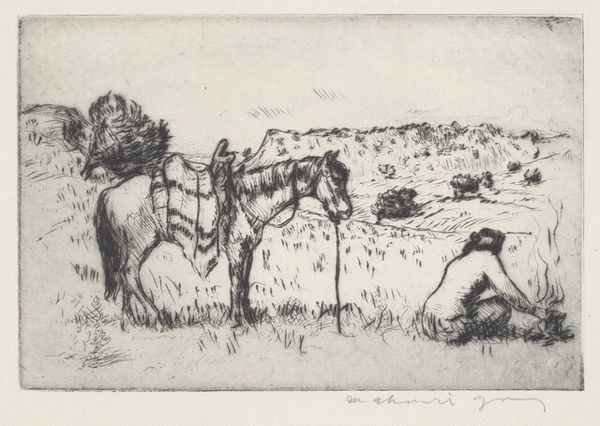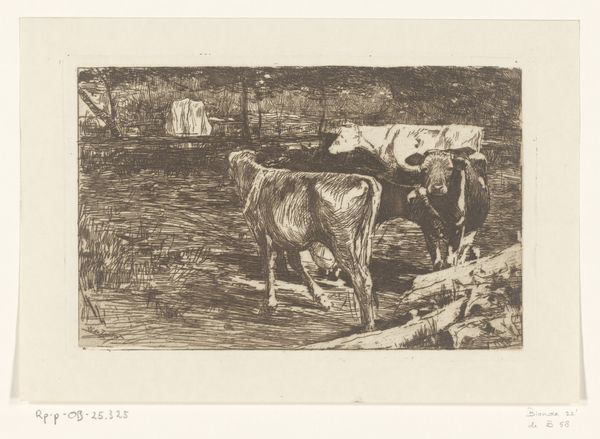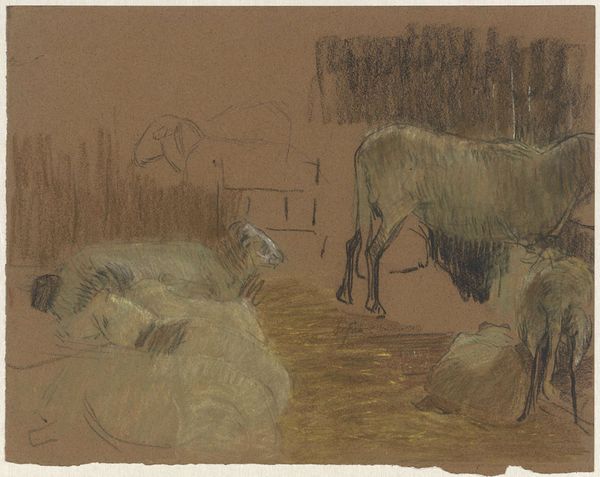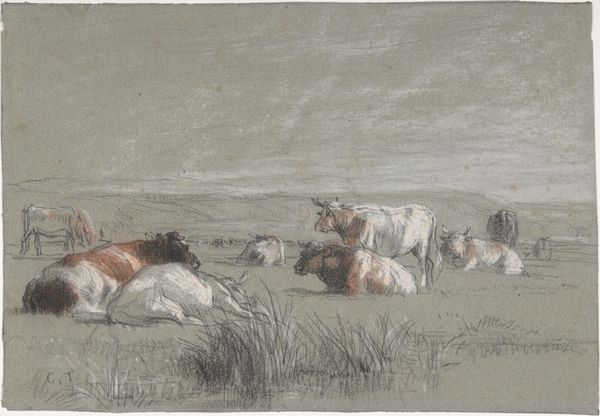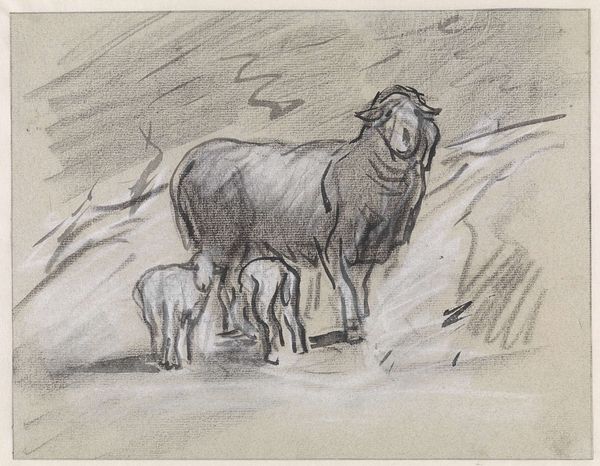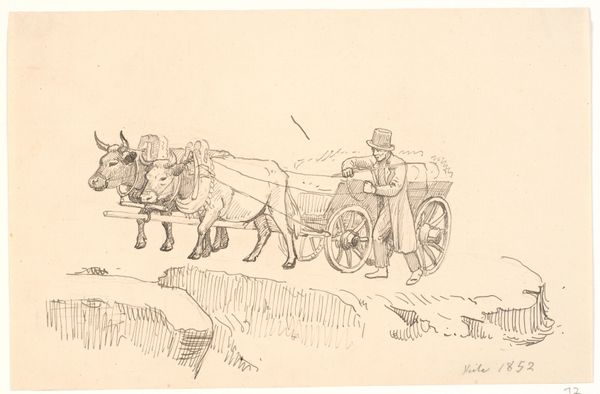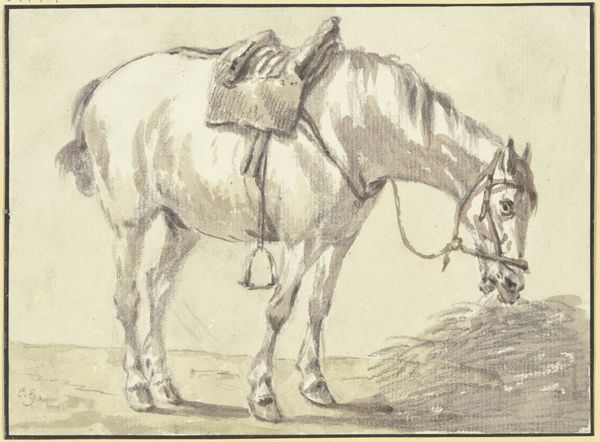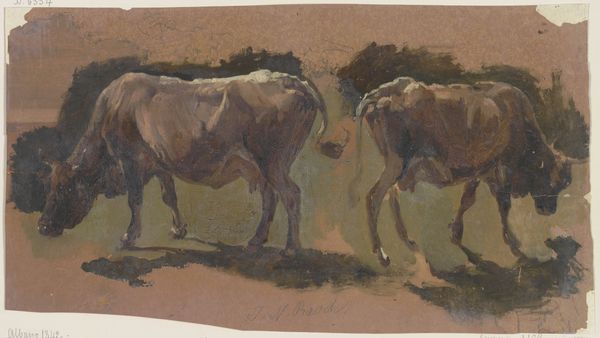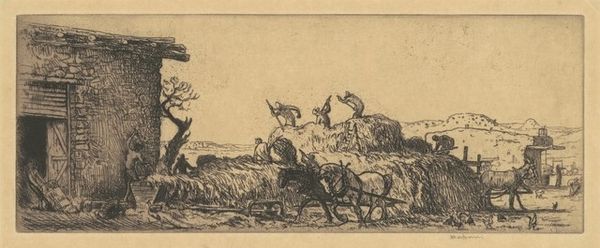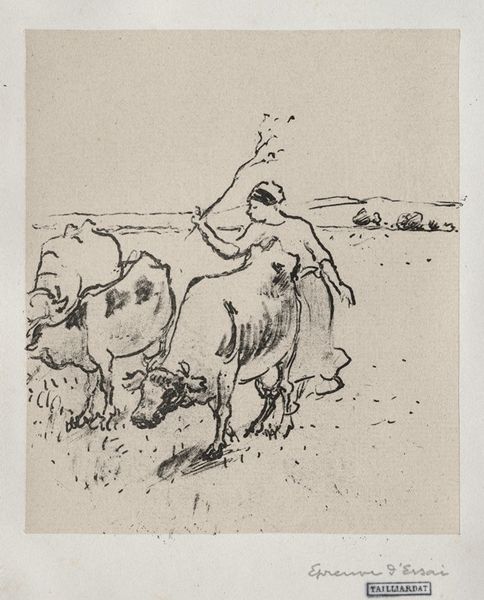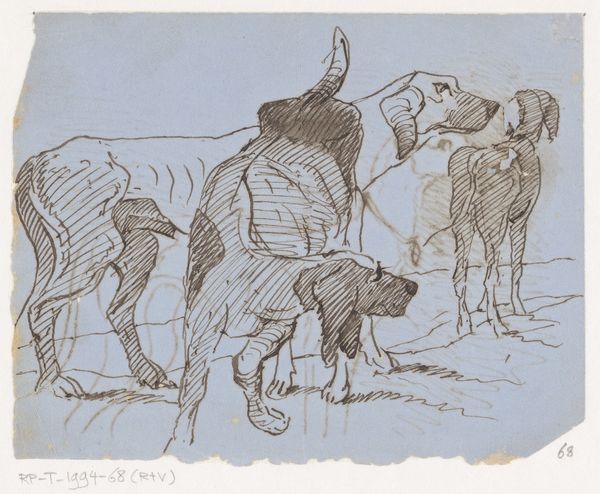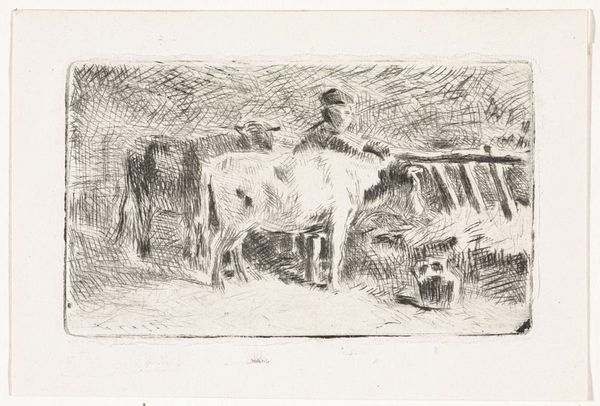
print, watercolor
# print
#
landscape
#
watercolor
#
folk-art
#
naïve-art
#
naive art
#
watercolor
Dimensions: Image: 176 x 235 mm Sheet: 239 x 313 mm
Copyright: National Gallery of Art: CC0 1.0
Editor: So, here we have "Vermont Meadow," a watercolor print created in 1945 by Geno Pettit. It's got this real folksy charm, and the colors are pretty muted, giving it a somewhat subdued feel. What strikes you about this piece? Curator: It's fascinating to consider "Vermont Meadow" within the context of post-war American art. We see a turn towards regionalism and an idealization of rural life. Given that it's 1945, right at the end of the war, this scene offers an escape from the anxieties and horrors that conflict evoked. What's really interesting is how artists portrayed such scenes, both reflecting and shaping popular notions of "Americana". How does the style connect to the image of an idyllic America, do you think? Editor: I guess the naivety contributes to that image – it feels unpretentious, almost like anyone could have painted it. But that's probably deceptive, right? It's a constructed image, regardless. Curator: Exactly! It’s a calculated simplicity. While appearing accessible, it taps into deeper currents of national identity. Prints like these helped define and circulate an easily digestible version of American identity. Where might such idealized representations find a home beyond art galleries? Editor: Hmm…maybe in schools, public buildings, places where that national narrative gets reinforced? It definitely feels like it belongs in a social studies textbook. Curator: Precisely. These artworks participated in the visual construction of the nation, reminding citizens of a perceived collective heritage. The distribution network really amplified the work’s role. What's your take on how museums now present these works within this context? Editor: It makes you realize that what feels like a simple landscape is actually packed with cultural and political meaning. It’s less about the individual artist and more about how that artwork functions in the public sphere. Curator: I concur. Reflecting on "Vermont Meadow," it reinforces the importance of analyzing art beyond the aesthetic and within the complex web of its social life. Thanks, I really enjoyed sharing ideas on this work. Editor: Thanks, this discussion totally changed my perception, I learned so much.
Comments
No comments
Be the first to comment and join the conversation on the ultimate creative platform.
